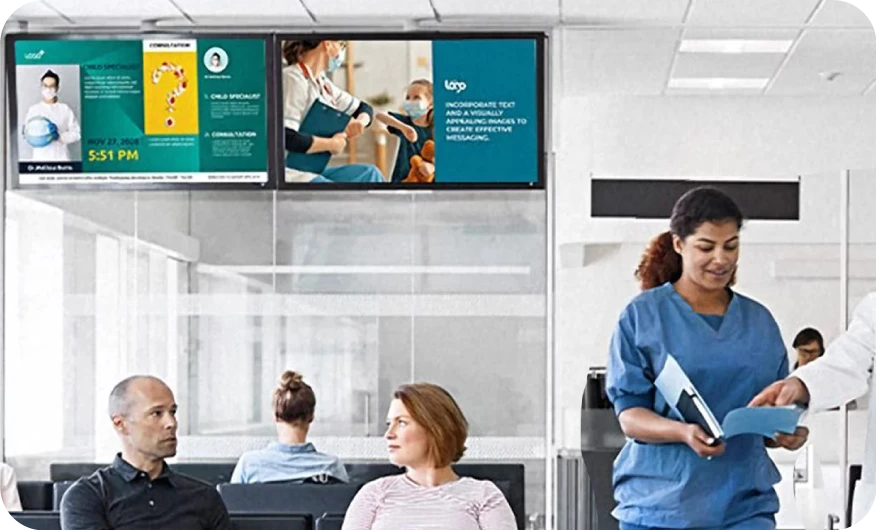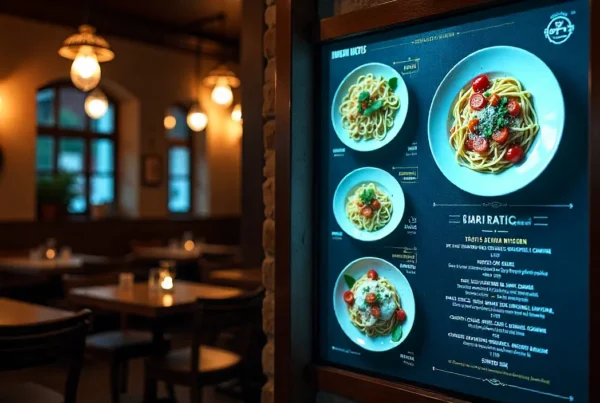Highly efficient communication is a vital healthcare need that enables effective systems flow and better patient comfort alongside urgent message delivery. Hospital digital signage systems now revolutionize how healthcare facilities communicate with their three main audience groups: patients, staff, and visitors. Hospitals can deliver an advanced method of audience engagement through the substitution of traditional bulletin boards and paper signs with digital platforms. This extensive overview examines hospital digital signage’s significance together with its advantages, which lead to better hospital experiences.
Introduction to Digital Signage in Healthcare
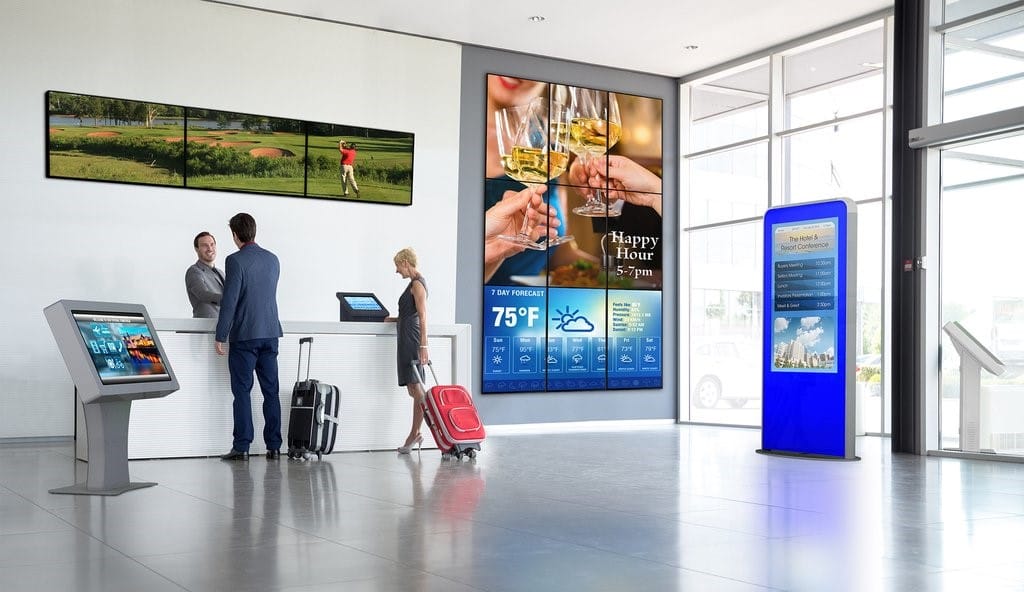
Modern hospitals have developed into technology-based ecosystems which require seamless communication because it has evolved from luxury to essential need. The evolution of healthcare facilities depends heavily on digital signage systems for hospitals. The system takes over conventional static bulletin boards to show smart, adaptable, impactful displays. The transformation goes beyond superficial changes because it serves operational purposes. Through digital signage, medical facilities gain an adaptive method of distributing information while strengthening interactions with patients and maintaining live-time communication.
The Evolution of Hospital Communication
A major change has occurred in hospital communication, replacing packed whiteboards and ancient paper advertising with touch-screen dashboards and real-time data display platforms. Medical service providers now use digital signs to deliver detailed information rapidly with precision and aesthetic appeal, which results in operational enhancements and satisfied patients.
What Are Digital Signage Solutions for Hospitals?
The hospital-wide network of screens displayed throughout medical facilities shows real-time content, which constitutes hospital digital signage. Digital signage platforms present multiple kinds of content, including both navigational mapping systems and crisis warning systems. Digital signage technology acts as an extension of current hospital systems, offering customized functionality while delivering communications functions internally and externally. Hospitals benefit from a CMS that enables staff members to manage their displays from a central location to maintain current content.
Digital signage delivers engaging user experiences since its displays reach viewers through visual impact along with emotional connections and active user participation. Hospital clients engage with a dynamic environment that provides valuable experiences during their hospital stay.
Benefits of Digital Signage in Medical Facilities
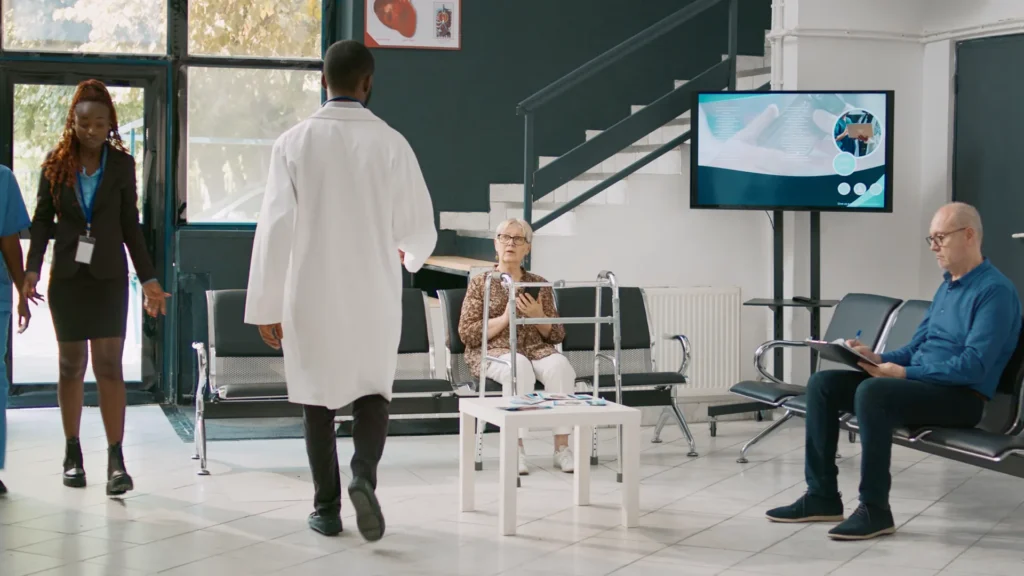
Enhanced Patient Engagement
Through digital signage, hospitals can effectively connect patients to health information as well as process instructions and relaxing images alongside wellness content. Through digital information delivery, patients gain knowledge, which reduces their anxiety levels and creates a calming atmosphere in medical facilities.
Streamlined Internal Communication
The hospital requires effective communication systems to function properly. Hospitals can maintain staff alignment through digital signage software, which operates without disturbing workflow procedures for surgical schedules and shift rotations. Digital signage presents up-to-the-minute information that keeps all hospital personnel, including doctors and janitorial staff, informed with the same content.
Real-Time Emergency Alerts
High-pressure emergencies make digital signage an essential tool for hospital-wide communication. The system equips hospitals to deliver time-sensitive alerts without delay, whether they are Code Red announcements or Active Shooter warnings. The correct personnel receive vital information in critical moments through this system.
Types of Digital Signage Used in Hospitals
Different hospital requirements demand various digital signage solutions which hospitals adopt. Hospital digital signage includes several standard forms, which include:
Wayfinding Displays
Hospitals exist as extensive facilities that contain many floors and operational sections. Intuitive hospital navigation systems in the form of “wayfinding displays” enable patients, along with visitors, to find their destination while minimizing their anxiety through easier navigation. Users can engage with these displays because they offer interactive features that enable them to search for departments along with specific rooms.
Interactive Kiosks
Patients can perform check-in operations and appointment confirmation, billing payments, and queue ticket printing through touch screen kiosks in healthcare settings. The system brings operational efficiency together with patient satisfaction through shorter waiting periods.
Patient Room Signage
Medical facilities use digital bedside screens to deliver personalized care through the automated display of patients’ identity information as well as procedure schedules, food limitations, and entertainment access. The displays use hospital systems that maintain secure access to accurate and updated information.
Waiting Room Displays
Digital hospital signage in waiting areas provides patients and their families with queue numbers along with estimated wait times and relaxing visuals, which transforms unproductive waiting periods into less stressful experiences.
Transforming the Waiting Room Experience

Patients experience heightened stress levels and dissatisfaction when they find themselves waiting in uninteresting waiting areas. Hospital digital signage transforms waiting rooms into educational spaces that offer a distraction to patients. Patients receive better waiting experiences through viewing Health-related PSAs combined with facility promotions and silent TV news broadcasts.
Digital Signage for Wayfinding and Navigation
The inability to navigate properly leads to waiting delays as well as missed appointments, which create unnecessary frustration. Hospital map display systems combined with directional information enable visitors to move independently through buildings while reducing operational costs and operational tasks. Hospitals which implement dynamic guides together with real-time updates will maintain an informed patient and visitor community about departmental and facility layout adjustments.
Role in Staff Communication and Coordination
Hospital staff must receive important messages through internal communication channels without delay. Through digital signage software for hospitals, administrators can show essential messages regarding operating room availability, staff schedules and internal announcements in an immediate and clear manner. Real-time information becomes accessible to staff members through this system, which removes the need for paper-based communication.
Integration with Hospital Information Systems (HIS)
Hospital digital signage solutions gain their most important strength through their capability to connect with Hospital Information Systems (HIS) and PACS and EHR systems. The connection enables signage to retrieve live information while tailoring content, which boosts patient care services and operational management capabilities. Hospital data integration enables accurate and efficient outdoor room communications when surgery status and patient information are displayed.
Digital Signage for Emergency and Code Alerts
Digital signage functions as a life-saving mechanism when it comes to essential situations, including lockdowns, fire evacuations and infection control incidents. Digital signage uses customizable alert functions to send building-wide messages together with critical instructions that allow emergency responses to happen sooner.
Improving Operational Efficiency with Real-Time Updates
The delays that happen with imaging tests, along with lab results and transport services, result in both efficiency problems and patient dissatisfaction. The implementation of digital signage systems allows departments to receive instantly updated information about crucial parameters. Real-time information updates help maintain workflow flexibility, which enables efficient patient movement along the care sequence, thus decreasing system waiting times.
Customizable Content for Diverse Hospital Departments
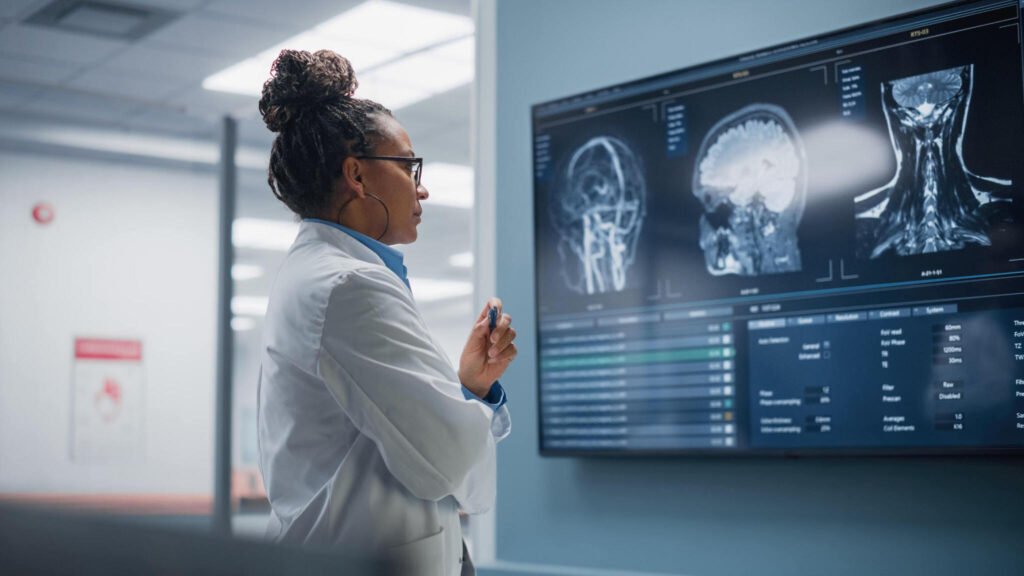
The requirements of each hospital department stand unique from others. Every hospital department, including the ICU and pediatric units, can customize their digital sign content according to their needs. The pediatric department shows cartoons, but the surgical department uses patient progress charts alongside staff protocols. The highly personalized approach boosts department productivity and maintains material content alignment with all viewership needs.
Accessibility and Multilingual Support
Digital signage technology serves as a communication bridge for hospitals that need to reach various population groups. Current healthcare signage incorporates language adaptation features with ADA interface requirements and captioning options, as well as voice-operated and multi-language capabilities. The communication solution includes features that allow universal accessibility to accommodate all patients irrespective of language skills or physical limitations.
Compliance with HIPAA and Data Security Standards
Every hospital digital signage implementation must adhere to data protection laws, including the American HIPAA standards. Secure content management systems function to safeguard patient privacy through strong access control mechanisms and encryption together with privacy protocols. Display interaction and personalization features do not compromise the protection of sensitive patient data because of the implemented security protocols.
Future Trends in Hospital Digital Signage
Our technological progress enhances the capabilities of digital signage systems that are delivered to healthcare facilities. Emerging trends include:
1. AI-Powered Content Delivery
The worldwide digital signage solutions sector has adopted artificial intelligence (AI) to provide content oriented toward the time of day, along with department traffic statistics and weather updates.
2. Touchless Interfaces
The pandemic’s impact on hygiene raised the speed of digital display adoption through voice-controlled systems alongside gesture recognition that cuts both physical contact and provides better usability to users.
3. Personalized Healthcare Messaging
Digital displays in health facilities will receive patient-specific health recommendations and appointment notifications through merged patient profiles and wearable technology in the future.
4. Environmental Adaptation
Digital signage employs sensors to modify its brightness together with language selection and content delivery through factors that include crowd density, ambient noise levels, and patient proximity.
5. Remote Management & Predictive Maintenance
Cloud-based digital signage lets system administrators manage content remotely while also sending alerts regarding upcoming equipment breakdowns. The proactive management system leads to continuous operations while maintaining optimal operational performance.
The Selection of a Proper Digital Signage Partnership

The decision to choose the correct digital signage provider extends beyond normal procurement protocols because it means creating a strategic business alliance. Choose vendors that:
• Understand healthcare regulations.
• Digital signage software solutions which adapt to hospital needs while maintaining complete security standards.
• Provide 24/7 technical support and training.
Take Your Hospital’s Communication to the Next Level
Medical institutions that want to boost communication while heightening operational effectiveness and providing better patient experiences should read on. The hospitals that implement digital signage solutions gain the power to update content in real time and provide flexible, interactive capabilities able to revamp their entire facility. The start of your journey with Nento Corp allows you to investigate our hospital digital signage software that can transform the way your hospital operates and interacts with patients. The service includes a 14-day trial period with no costs.
Frequently Asked Questions (FAQs)
What is digital signage in a hospital setting?
The hospital’s implementation of digital signage involves networked digital displays that present directions alongside health education materials, schedules, and emergency alerts to serve patients, staff, and visitors.
How does digital signage benefit hospital operations?
Hospital operations gain efficiency, communication quality increases while printed material usage decreases, navigation becomes easier, and emergency alerts receive better support.
Can digital signage be integrated with existing hospital systems?
Today, digital signage systems function with hospital information systems (HISs), electronic medical records (EMRs), and scheduling programs to deliver automatic real-time presentations.
Is digital signage compliant with HIPAA?
Digital signage displays can integrate with Hospital Information Systems when hospitals use appropriate protocols for implementation. The content management system needs to use secure platforms that restrict access points and ensure that protected health information (PHI) stays hidden from the public.
What types of content can hospitals display on digital signage?
Digital signs in hospitals show direction maps together with wait period information alongside patient location and staff duty schedules, health advice, critical alerts, and marketing content.

